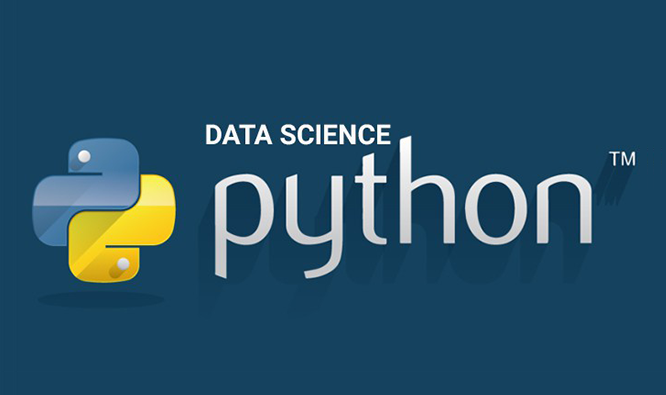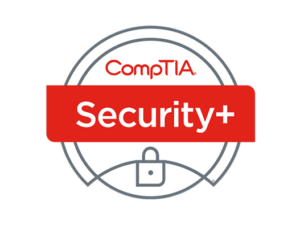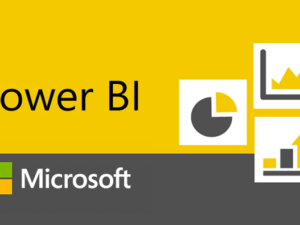Python Certification Training for Data Science
- Description
- Curriculum
- FAQ
- Reviews

It’s continued to be a favourite option for data scientists who use it for building and using Machine learning applications and other scientific computations. Python cuts development time in half with its simple to read syntax and easy compilation feature. Debugging programs is a breeze in Python with its built in debugger.
It runs on Windows, Linux/Unix, Mac OS and has been ported to Java and .NET virtual machines. Python is free to use, even for the commercial products, because of its OSI-approved open source license.
It has evolved as the most preferred Language for Data Analytics and the increasing search trends on Python also indicates that it is the ” Next Big Thing ” and a must for Professionals in the Data Analytics domain.
After completing this Data Science Certification training, you will be able to:
- Programmatically download and analyze data
- Learn techniques to deal with different types of data – ordinal, categorical, encoding
- Learn data visualization
- Using I python notebooks, master the art of presenting step by step data analysis
- Gain insight into the ‘Roles’ played by a Machine Learning Engineer
- Describe Machine Learning
- Work with real-time data
- Learn tools and techniques for predictive modeling
- Discuss Machine Learning algorithms and their implementation
- Validate Machine Learning algorithms
- Explain Time Series and its related concepts
- Perform Text Mining and Sentimental analysis
- Gain expertise to handle business in future, living the present
Certs Learning’s Data Science certification course in Python is a good fit for the below professionals:
- Programmers, Developers, Technical Leads, Architects
- Developers aspiring to be a ‘Machine Learning Engineer’
- Analytics Managers who are leading a team of analysts
- Business Analysts who want to understand Machine Learning (ML) Techniques
- Information Architects who want to gain expertise in Predictive Analytics
- ‘Python’ professionals who want to design automatic predictive models
The pre-requisites for Certs Learning’s Python course include the basic understanding of Computer Programming Languages. Fundamentals of Data Analysis practiced over any of the data analysis tools like SAS/R will be a plus. However, you will be provided with complimentary “Python Statistics for Data Science” as a self-paced course once you enroll for the course.
-
1Introduction to Python
Goal: Give a brief idea of what Python is and touch on the basics.
Learning Objectives: At the end of this Module, you should be able to:
- Define Python
- Understand the need for Programming
- Know why to choose Python over other languages
- Setup Python environment
- Understand Various Python concepts – Variables, Data Types Operators, Conditional Statements and Loops
- Illustrate String formatting
- Understand Command Line Parameters and Flow control
Topics:
- Overview of Python
- Companies using Python
- Other applications in which Python is used
- Discuss Python Scripts on UNIX/Windows
- Variables
- Operands and Expressions
- Conditional Statements
- Loops
- Command Line Arguments
- Writing to the screen
Hands-on/Demo:
- Creating “Hello World” code
- Variables
- Demonstrating Conditional Statements
- Demonstrating Loops
-
2Sequences and File Operations
Goal: Learn different types of sequence structures, related operations, and their usage. Also learn diverse ways of opening, reading, and writing to files.
Learning Objectives: At the end of this Module, you should be able to:
- Understand Operations performed on Files
- Learn what Sequences are
- Execute Sequence Operations
- Understand Types of Sequences in Python: Lists, Tuples, Strings, Sets, Dictionaries
Topics:
- Python files I/O Functions
- Lists and related operations
- Tuples and related operations
- Strings and related operations
- Sets and related operations
- Dictionaries and related operations
Hands-on/Demo:
- Tuple - properties, related operations, compared with a list
- List - properties, related operations
- Dictionary - properties, related operations
- Set - properties, related operations
-
3Deep Dive – Functions, OOPs, Modules, Errors and Exceptions
Learning Objectives: In this Module, you will learn how to create generic python scripts, how to address errors/exceptions in code and finally how to extract/filter content using regex.
Topics:
- Functions
- Function Parameters
- Global Variables
- Variable Scope and Returning Values
- Lambda Functions
- Object-Oriented Concepts
- Standard Libraries
- Modules Used in Python
- The Import Statements
- Module Search Path
- Package Installation Ways
- Errors and Exception Handling
- Handling Multiple Exceptions
Hands On/Demo:
- Functions - Syntax, Arguments, Keyword Arguments, Return Values
- Lambda - Features, Syntax, Options, Compared with the Functions
- Sorting - Sequences, Dictionaries, Limitations of Sorting
- Errors and Exceptions - Types of Issues, Remediation
- Packages and Module - Modules, Import Options, sys Path
Skills:
- Error and Exception management in Python
- Working with functions in Python
-
4Introduction to Machine Learning with Python
Goal: In this module, you will learn the concept of Machine Learning and it’s types.
Objective: At the end of this module, you should be able to:
- Essential Python Revision
- Necessary Machine Learning Python libraries
- Define Machine Learning
- Discuss Machine Learning Use cases
- List the categories of Machine Learning
- Illustrate Supervised Learning Algorithms
- Identify and recognize machine learning algorithms around us
- Understand the various elements of machine learning algorithm like parameters, hyper parameters, loss function and optimization.
Topics:
- Python Revision (numpy, Pandas, scikit learn, matplotlib)
- What is Machine Learning?
- Machine Learning Use-Cases
- Machine Learning Process Flow
- Machine Learning Categories
- Linear regression
- Gradient descent
Hands On:
- Linear Regression – Using Boston Dataset
-
5Data Manipulation
Goal: Through this Module, you will understand in detail about Data Manipulation.
Learning Objectives: At the end of this Module, you should be able to:
- Perform function manipulations on Data objects
- Perform Concatenation, Merging and Joining on DataFrames
- Iterate through DataFrames
- Explore Datasets and extract insights from it
Topics:
- Basic Functionalities of a data object
- Merging of Data objects
- Concatenation of data objects
- Types of Joins on data objects
- Exploring a Dataset
- Analyzing a dataset
Hands-on/Demo:
- Pandas Function- Ndim(), axes(), values(), head(), tail(), sum(), std(), iteritems(), iterrows(), itertuples(), GroupBy operations, Aggregation, Concatenation, Merging and joining
-
6Introduction to Machine Learning with Python
Learning Objectives: In this module, you will learn the concept of Machine Learning and its types.
Topics:
- Python Revision (numpy, Pandas, scikit learn, matplotlib)
- What is Machine Learning?
- Machine Learning Use-Cases
- Machine Learning Process Flow
- Machine Learning Categories
- Linear regression
- Gradient descent
Hands On/Demo:
- Linear Regression – Boston Dataset
Skills:
- Machine Learning concepts
- Machine Learning types
- Linear Regression Implementation
-
7Supervised Learning - I
Goal: In this module, you will learn Supervised Learning Techniques and their implementation, for example, Decision Trees, Random Forest Classifier etc.
Objective: At the end of this module, you should be able to:
- Understand What is Supervised Learning?
- Illustrate Logistic Regression
- Define Classification
- Explain different Types of Classifiers such as Decision Tree and Random Forest
Topics:
- What is Classification and its use cases?
- What is Decision Tree?
- Algorithm for Decision Tree Induction
- Creating a Perfect Decision Tree
- Confusion Matrix
- What is Random Forest?
Hands On:
- Implementation of Logistic regression, Decision tree, Random forest
-
8Dimensionality Reduction
Goal: In this module you will learn about impact of dimensions within data. You will be taught to perform factor analysis using PCA and compress dimensions. Also, you will be developing LDA model.
Objective: At the end of this module, you should be able to:
- Define the importance of Dimensions
- Explore PCA and its implementation
- Discuss LDA and its implementation
Topics:
- Introduction to Dimensionality
- Why Dimensionality Reduction
- PCA
- Factor Analysis
- Scaling dimensional model
- LDA
Hands On:
- PCA
- Scaling
-
9Supervised Learning - II
Goal: In this module, you will learn Supervised Learning Techniques and their implementation, for example, Decision Trees, Random Forest Classifier etc.
Objective: At the end of this module, you should be able to:
- Understand What is Naïve Bayes Classifier
- How Naïve Bayes Classifier works?
- Understand Support Vector Machine
- Illustrate How Support Vector Machine works?
- Hyperparameter optimization
Topics:
- What is Naïve Bayes?
- How Naïve Bayes works?
- Implementing Naïve Bayes Classifier
- What is Support Vector Machine?
- Illustrate how Support Vector Machine works?
- Hyperparameter optimization
- Grid Search vs Random Search
- Implementation of Support Vector Machine for Classification
Hands On:
- Implementation of Naïve Bayes, SVM
-
10Unsupervised Learning
Learning Objectives - Learn about Unsupervised Learning and the various types of clustering that can be used to analyze the data.
Topics:
- What is Clustering & its use cases
- What is K-means Clustering?
- What is C-means Clustering?
- What is Canopy Clustering?
- What is Hierarchical Clustering?
Hands-On/Demo:
- Implementing K-means Clustering in R
- Implementing C-means Clustering in R
- Implementing Hierarchical Clustering in R
-
11Association Rules Mining and Recommendation Systems
Goal: In this module, you will learn Association rules and their extension towards recommendation engines with Apriori algorithm.
Objective: At the end of this module, you should be able to:
- Define Association Rules
- Learn the backend of recommendation engines and develop your own using python
Topics:
- What are Association Rules?
- Association Rule Parameters
- Calculating Association Rule Parameters
- Recommendation Engines
- How Recommendation Engines work?
- Collaborative Filtering
- Content Based Filtering
Hands On:
- Apriori Algorithm
- Market Basket Analysis
-
12Reinforcement Learning
Introduction to Reinforcement Learning
Learning Objectives: The aim of this module is to introduce you to the fundamentals of Reinforcement Learning and its elements. This module also introduces you to OpenAI Gym - a programming environment used for implementing RL agents.
Topics:
- Branches of Machine Learning
- What is Reinforcement Learning?
- The Reinforcement Learning Process
- Elements of Reinforcement Learning
- RL Agent Taxonomy
- Reinforcement Learning Problem
- Introduction to OpenAI Gym
Bandit Algorithms and Markov Decision Process
Learning Objectives: The aim of this module is to learn Bandit Algorithms and Markov Decision Process.
Topics:
- Bandit Algorithms
- Markov Process
- Markov Reward Process
- Markov Decision Process
Dynamic Programming & Temporal Difference Methods
Learning Objectives: The aim of this module is to develop an understanding of Dynamic Programming Algorithms and Temporal Difference Learning methods.
Topics:
- Introduction to Dynamic Programming
- Dynamic Programming Algorithms
- Monte Carlo Methods
- Temporal Difference Learning Methods
Deep Q Learning
Learning Objectives: The aim of this module is to learn Policy Gradients and develop an understanding of Deep Q Learning
Topics:
- Policy Gradients
- Policy Gradients using TensorFlow
- Deep Q learning
- Q learning with replay buffers, target networks, and CNN
In-class Project
Goal:
- The aim of this module is to provide you hands-on experience in Reinforcement Learning.
-
13Time Series Analysis
Goal: In this module, you will learn about Time Series Analysis to forecast dependent variables based on time. You will be taught different models for time series modelling such that you analyse a real time dependent data for forecasting.
Objective: At the end of this module, you should be able to:
- Explain Time Series Analysis (TSA)
- Discuss the need of TSA
- Describe ARIMA modelling
- Forecast the time series model
Topics:
- What is Time Series Analysis?
- Importance of TSA
- Components of TSA
- White Noise
- AR model
- MA model
- ARMA model
- ARIMA model
- Stationarity
- ACF & PACF
Hands on:
- Checking Stationarity
- Converting a non-stationary data to stationary
- Implementing Dickey Fuller Test
- Plot ACF and PACF
- Generating the ARIMA plot
- TSA Forecasting
-
14Model Selection and Boosting
Goal: In this module, you will learn about selecting one model over another. Also, you will learn about Boosting and its importance in Machine Learning. You will learn on how to convert weaker algorithms to stronger ones.
Objective: At the end of this module, you should be able to:
- Discuss Model Selection
- Define Boosting
- Express the need of Boosting
- Explain the working of Boosting algorithm
Topics:
- What is Model Selection?
- Need of Model Selection
- Cross – Validation
- What is Boosting?
- How Boosting Algorithms work?
- Types of Boosting Algorithms
- Adaptive Boosting
Hands on:
- Cross Validation
- AdaBoost







